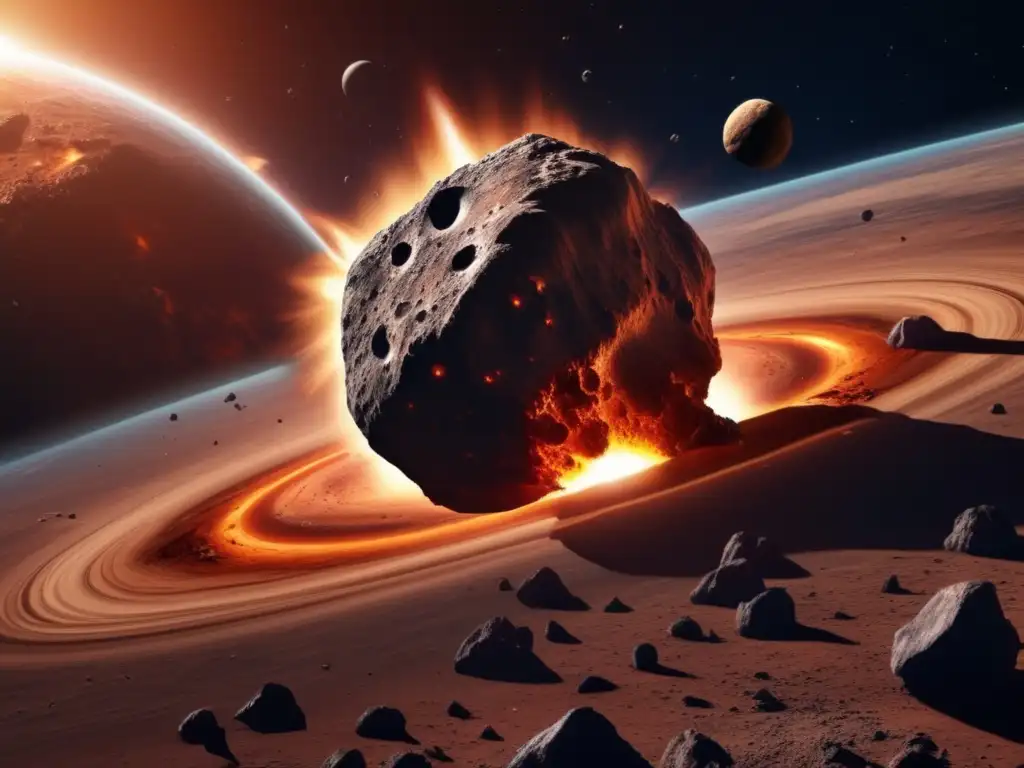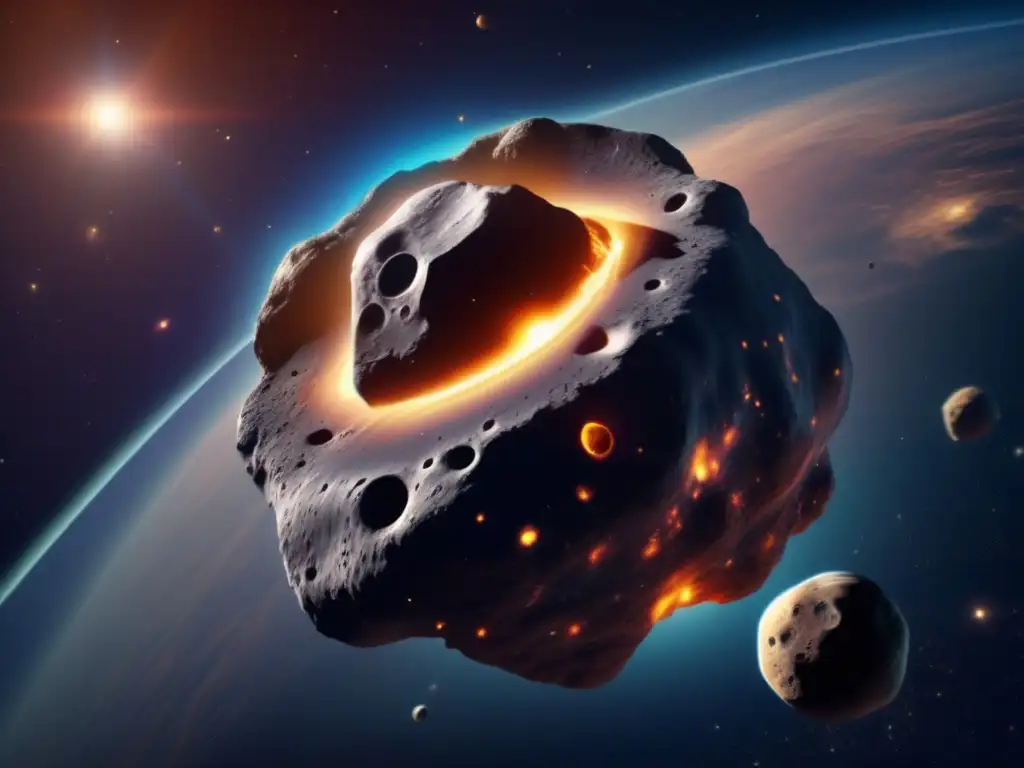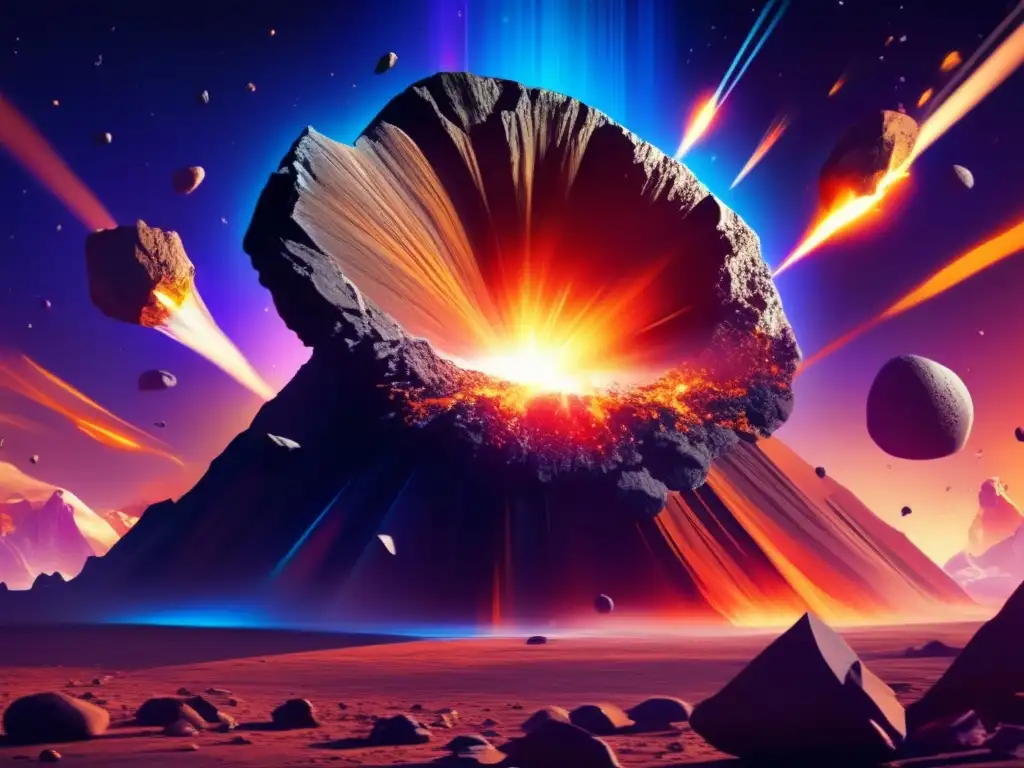From Space To Surface: The Journey Of An Asteroid

Introduction
Asteroids have been intriguing astronomers and space enthusiasts for years. These celestial objects are remnants from the early Solar System and can tell us a lot about its formation. One of the most fascinating aspects of asteroids is their journey from space to surface - the impact they make when they collide with a planet or moon. In this article, we will explore the journey of an asteroid from space to surface and discuss the cultural, scientific, and historical significance of this process.
The Formation of Asteroids

The Early Solar System
Asteroids are small, rocky objects that orbit the Sun. They are believed to be leftovers from the formation of the early Solar System, which began about 4.6 billion years ago. At this time, a large cloud of gas and dust collapsed and formed the Sun and the planets. Some of the debris left over from this process never coalesced into a planet, but instead became asteroids.
Main Asteroid Belt
The majority of asteroids in our Solar System reside in the Main Asteroid Belt, a region between Mars and Jupiter. These asteroids range in size from small, rocky fragments to large bodies like Ceres, which is nearly a quarter of the size of our Moon. The asteroids in this belt are mostly made of rock and metal, and some have water or organic compounds.
Near-Earth Asteroids
Some asteroids have orbits that bring them closer to Earth. These Near-Earth Asteroids (NEAs) are of particular interest to scientists because they have the potential to impact our planet. NEAs are classified as potentially hazardous if they come within roughly 7.5 million kilometers of Earth's orbit and are larger than 140 meters in diameter.
The Journey of an Asteroid

First Encounter with Gravitational Forces
When an asteroid is formed, it exists in space as a low-gravity object, meaning it is not held together by strong forces. As it moves through the Solar System, it encounters gravitational forces from other objects, such as planets or moons. These forces can alter its trajectory and accelerate it towards a planet.
Entry into Earth's Atmosphere
When an asteroid enters Earth's atmosphere, it begins to experience tremendous heat due to air friction. The heat causes the asteroid to vaporize and create a glowing trail called a meteor or shooting star. Most small asteroids completely burn up during this process, but larger ones can survive the journey and impact the surface.
Asteroid Impact on Earth
When an asteroid impacts the surface of a planet or moon, it can cause significant damage. The amount of damage caused depends on the size of the asteroid, its velocity, and the composition of the impacted surface. Scientists believe that the impact of an asteroid was responsible for the extinction of the dinosaurs about 66 million years ago, as well as several other mass extinctions throughout Earth's history.
The Significance of Asteroid Impacts

In Scientific Research
Asteroid impacts are important to scientific research because they help us understand the composition of planets and moons. When an asteroid impacts a planet or moon, it creates a crater that can be studied. Scientists can analyze the rocks and materials ejected from the impact to learn about the geology and chemistry of the impacted surface.
In Cultural and Historical Context
Asteroid impacts have been depicted in various forms of media, from movies to comic books. They are often associated with catastrophic events and mass extinctions. The study of asteroid impacts is also relevant to understanding the cultural beliefs and mythology surrounding celestial objects. For example, some ancient cultures believed that comets and asteroids were omens of impending doom or important messages from the gods.
Frequently Asked Questions

-
What is an asteroid?
An asteroid is a small, rocky object that orbits the Sun.
-
What is the Main Asteroid Belt?
The Main Asteroid Belt is a region between Mars and Jupiter where the majority of asteroids in our Solar System reside.
-
What are Near-Earth Asteroids?
Near-Earth Asteroids (NEAs) are asteroids with orbits that bring them closer to Earth. They are of interest to scientists because they have the potential to impact our planet.
-
Can an asteroid impact Earth?
Yes, an asteroid can impact Earth. The amount of damage caused depends on the size of the asteroid, its velocity, and the composition of the impacted surface.
-
Why are asteroid impacts significant?
Asteroid impacts are significant because they help us understand the geology and chemistry of planets and moons. They are also relevant to understanding cultural beliefs and mythology surrounding celestial objects.
Conclusion
Asteroids play an important role in the formation of our Solar System and can impact our planet in significant ways. From space to surface, the journey of an asteroid is complex and fascinating. The study of asteroid impacts is important to scientific research and cultural understanding. We hope this article has provided you with valuable insights into the world of asteroids and their impact (both figuratively and literally) on our lives.
If you have any thoughts or comments about this article or Asteroid Realm, please share them in the comments section below. Thank you for your interest in asteroids and for being a part of the Asteroid Realm community!
Additional Resources

- NASA Asteroid Overview
- NASA Asteroid Watch
- National Geographic Asteroids, Comets, and Meteors Resource
 Asteroid Strikes: Catalysts For Geological Change
Asteroid Strikes: Catalysts For Geological Change Asteroid Impacts: A Primer On Impact Cratering
Asteroid Impacts: A Primer On Impact Cratering Impact Echoes: Asteroid Strikes And Seismic Activity
Impact Echoes: Asteroid Strikes And Seismic ActivityIf you want to discover more articles similar to From Space To Surface: The Journey Of An Asteroid, you can visit the Asteroid Impacts category.
Leave a Reply

Articulos relacionados: